- Home
- History of Sicily
The History of Sicily: From Ancient Times to Modern Day
Sicily is the largest island in the Mediterranean. Its history is long and complex, shaped by many cultures and civilizations.
Ancient Greeks, Romans, Normans, and Arabs... All have left their mark on the island's architecture, art, and traditions.

As fascinating as Sicily's history is, it is also a history of oppression. As the historian John Julius Norwich has said, the beauty of the landscape is matched only by the suffering of its people.
Although things look brighter now, the lessons of history can still be felt. They include hard times but also many grand moments.
Ancient Greeks Settle in Sicily
The ancient Greeks played a significant role in shaping the history of Sicily. First, Greek colonists arrived in the 8th century BC and established settlements on the island.
One of them was in Syracuse, which was founded in 734 BC and became one of the Mediterranean's most important cities in its time.
Another major Greek city was Akragas, established in 580 BC and now known as Agrigento. It still has one of the world's most significant collections of ancient Greek temples.
Agrigento's temples are world-famous. They have names, such as the Temple of Concordia, but their actual function remains a mystery hidden by time.
What we know, though, is that Greeks brought with them their language, religion, and culture. With them, Sicily became a center of art and philosophy.
However, while Greek civilization flourished in the cities of Sicily, a new power was emerging in the Italian Peninsula...
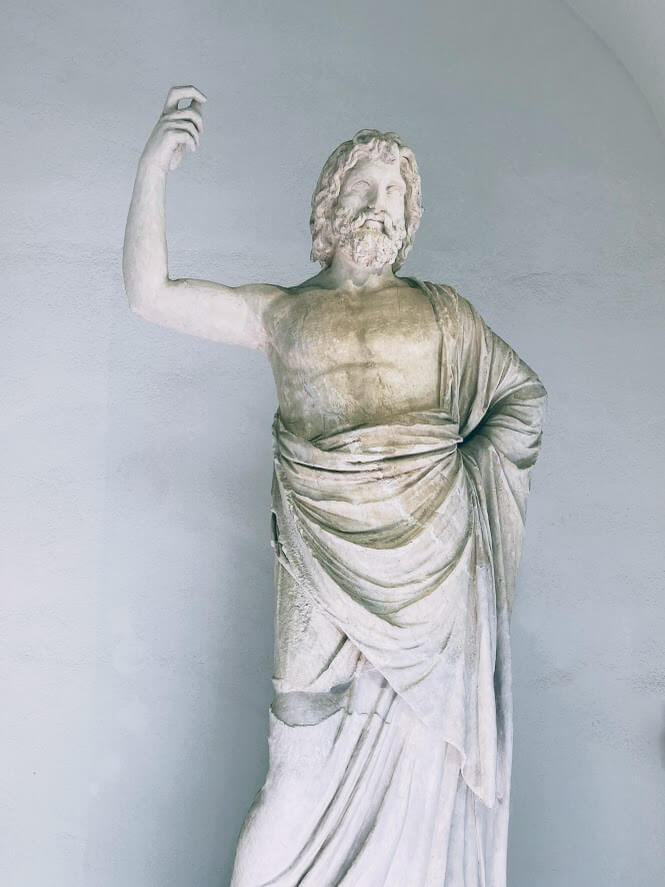 The Greek god Zeus seems like quite a groovy guy. The statue stands in the Archeological Museum of Palermo.
The Greek god Zeus seems like quite a groovy guy. The statue stands in the Archeological Museum of Palermo.The Roman Empire Arrive on the Shores of Sicily
The expansion of the Roman Empire could not fail to impact Sicily. The island was halfway between the two great powers of its time, Carthage and Rome. After a long war, Carthage was destroyed, and Rome remained. So, Sicily fell under Roman rule.
Roman times were pretty uneventful in terms of culture. The Romans treated Sicily with little respect. They were primarily interested in the island's fertile soil and strategic location. In those times, much of the island was taken over by vast landed estates.
This set a pattern of land tenure that ruined Sicilian agriculture for centuries.
Liberty was almost extinguished. The slave gangs toiled naked in the fields. The harvest was sent to Rome.
The island remained under Roman control for several centuries. In practice, it ended after the collapse of the Western Roman Empire in the 5th century AD.
The Arab Conquest Revitalizes Sicilian Culture
After Roman rule, Sicily became a province of the Byzantine Empire. At one point, Syracuse almost became the Empire's capital. Ultimately, the project failed to materialize, but Syracuse remained an essential Byzantine stronghold.
Then, in the 9th century AD, it was the turn of the Arabs from Northern Africa to conquer the island. The conquest was initially led by Ibrahim ibn Ahmad in 827 and completed in 902.
Compared to Roman rule, the time was relatively easy for the Sicilians. Greek Christian and Jewish communities were permitted to retain their autonomy.
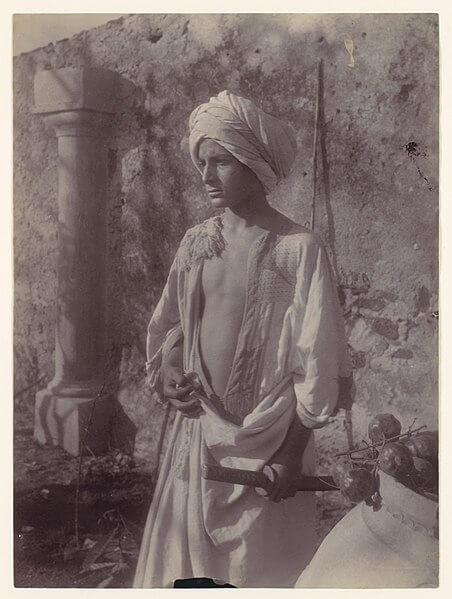 Sicilian boy in Moorish dress circa 1895. (Photo by Wilhelm von Gloeden)
Sicilian boy in Moorish dress circa 1895. (Photo by Wilhelm von Gloeden)The Muslims displayed a degree of religious toleration. The churches and monasteries were able to operate as before. Hellenistic scholarship flourished as it had done in Greek times.
The Arabs introduced new crops, such as citrus fruits, cotton, melon, pistachio, and date palms. They also planted enough sugarcane to build a substantial export trade.
The Arabs also brought a new agriculture system based on innovations such as terracing and siphon aqueducts for irrigation.
All this led to greater agricultural productivity. The damage to agriculture caused by the Romans was finally remedied.
Other Arab influences include a love of poetry, music, and art, which helped shape the island's cultural identity. The Arab influence is evident in many of Palermo's medieval churches, such as Monreale Cathedral and the Palatine Chapel.
Like the Greeks, the Arabs brought a rich cultural heritage with them that left a lasting impact on the island.
One thing Arabs didn't bring was political stability. Soon, different emirs began quarreling with each other, paving the way for new conquerors.
The Normans were descendants of Vikings who had settled in southern Italy. The Pope had mandated them to bring Christianity to Sicily and expand their territory simultaneously.
The Norman Kingdom of Sicily
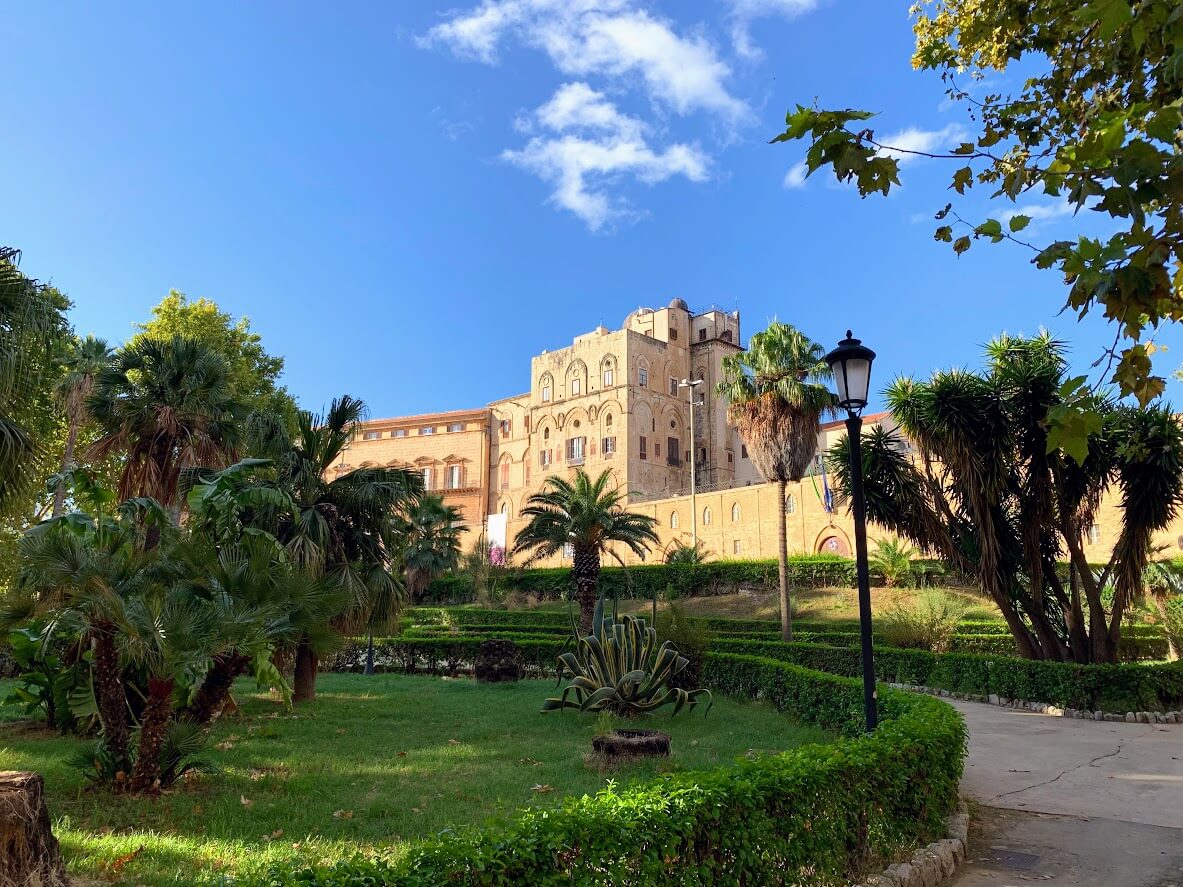 The Norman Castle in Palermo. The Arabs had made Palermo the capital of Sicily. It remained so under Norman rule, just as Arabic remained the language of administration.
The Norman Castle in Palermo. The Arabs had made Palermo the capital of Sicily. It remained so under Norman rule, just as Arabic remained the language of administration.
In 1060, a group of Norman soldiers led by Robert Guiscard and his brother Roger—later known as Roger I—arrived in Sicily and began to conquer the island. It took them over thirty years of fighting, but in 1091, Sicily was under their rule.
The Norman influence lasted a couple of hundred years. (The Norman Kingdom officially only from 1130-1194.) Under Norman rule, Sicily experienced a period of great prosperity and cultural flourishing.
The Normans introduced new innovations in architecture and art. Their many buildings, such as Monreale Cathedral, are now a UNESCO World Heritage Site: the Arab-Norman Palermo. They also introduced a new legal system in Sicily.
In governance, a feudal system helped consolidate Norman rule over the island. It provided the basis for the development of a powerful aristocracy.
The Norman conquest of Sicily brought a range of cultural, economic, and social developments. They helped shape the island's history and identity for centuries to come.
The History of Sicily After the Normans
Sicily flourished under Norman rule when the rest of Europe was in the throes of the darkest Middle Ages. But as the Renaissance began to illuminate the rest of Europe, it was Sicily's turn to sink into darkness.
After the Norman Kingdom, Sicily passed through the hands of various rulers. It experienced a tumultuous period of political instability and social upheaval.
After the Normans, control passed to the German Hohenstaufen dynasty. Of these, the time of Emperor Frederick II was especially significant for Sicily.
Frederick concentrated power to the crown, away from the barons and clerks. For the ordinary people, though, this meant less security and higher taxes.
For many Muslims in Sicily, the Hohenstaufen order was to leave the island. The resisters were forcibly removed.
The Hohenstaufen rule lasted from 1194 to 1266. At that time, the Pope granted Sicily to the French Angevins.
The Angevin family rule lasted only briefly, from 1266 to 1282. The capital was relocated from Palermo to Naples, taxes were further increased, and, overall, the situation was quite repressive.
In a short time, the Angevins managed to anger both the ordinary people and the nobles whose lands they yet again confiscated. This led to the Sicilian Vespers rebellion and the transfer of power to the Spanish.
The reign of the Aragonese family (1282-1516) got off to a promising start. They sought to respect local customs and restore power to the feudal lords. The actual rulers were often far away, so power gradually shifted back to the nobles.
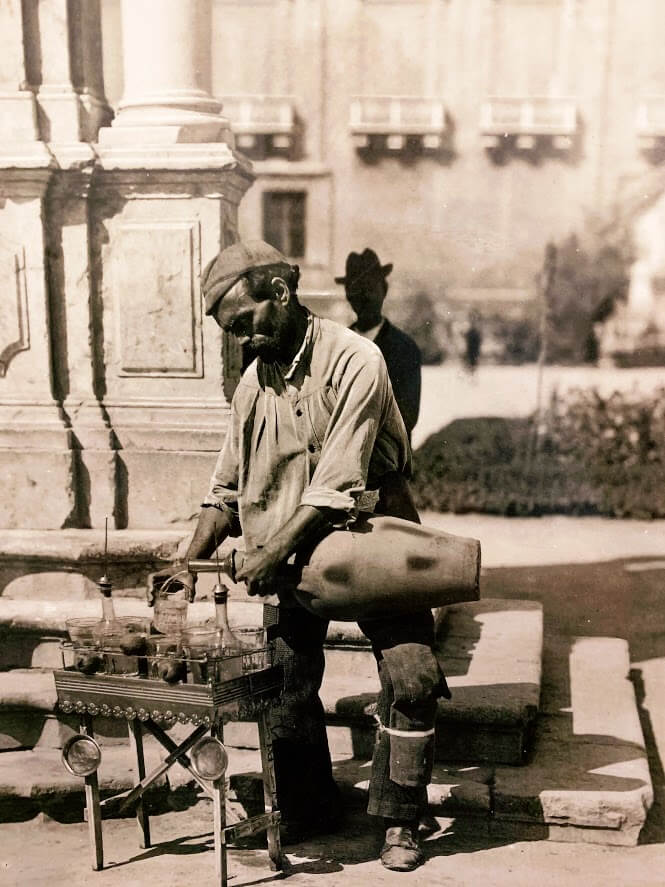
Except for a brief period of Austrian Habsburg rule (1720-1734), power then passed from one Spanish royal family to another.
The Bourbons (1734-1861) were the last rulers before the unification of Italy. Under their rule, Sicily was part of the 'Kingdom of the Two Sicilies.' The capital was in Naples, and little thought was given to the island in the sun.
Large estates were owned by a few, and often absentee, aristocrats. The state's inability to enforce law and order in the countryside led to the rise of brigandage and early forms of the Mafia.
Many unpopular policies, such as widespread army conscriptions, fuelled insurgency. Thus, when Garibaldi landed in Marsala and began the march towards Italian unification, the Sicilians welcomed him with open arms.
Not that the euphoria lasted very long.
Modern-Day Sicily and its Cultural Heritage
In 1861, Sicily became part of the newly created Italian state. The event was soon deemed unworthy of celebration.
Past centuries had already taught Sicilians that rulers were not to be trusted. The new taxes that affected the southern parts of Italy the most did not improve the situation.
This helped to grow the power of the Mafia. Mussolini was the first to make a serious attempt to destroy it. This effort ended when the Allied forces landed in Sicily and began their advance north.
After the Second World War, with Mussolini out of the picture, the Mafia gained strength. It soon became an international criminal organization. A culture of silence enabled it to take a century and a half for its existence to be publicly acknowledged.
Things began to change significantly only in the 1980s, thanks to men like Giovanni Falcone and Paolo Borsellino.
Today, Sicilian culture uniquely blends ancient traditions and contemporary influences.
The island's long history has left a lasting mark on its cultural heritage. It can be observed in everything from its language to its cuisine, music, and art.
Sicily also has lovely beaches, world-class wines, and historical landmarks.
Of course, there are also many challenges. These include economic struggles and political instability.
With all its peculiarities, Sicily is a significant hub of commerce and culture in the Mediterranean. For thousands of years, it has continued to attract visitors from around the world.
Conclusion
Sicily has a long, fascinating, and often painful history. Through two and a half thousand years of Greek, Roman, Arab, Norman, and Spanish rule, the island eventually became part of a unified Italian state in 1861.
Since 1946, Sicily has been an autonomous administrative division of Italy. From its troubled past, a thriving culture has grown. History lives side by side with modern-age wonders.
Sicily offers visitors many experiences and attractions, so it's no wonder millions of people worldwide visit it every year.
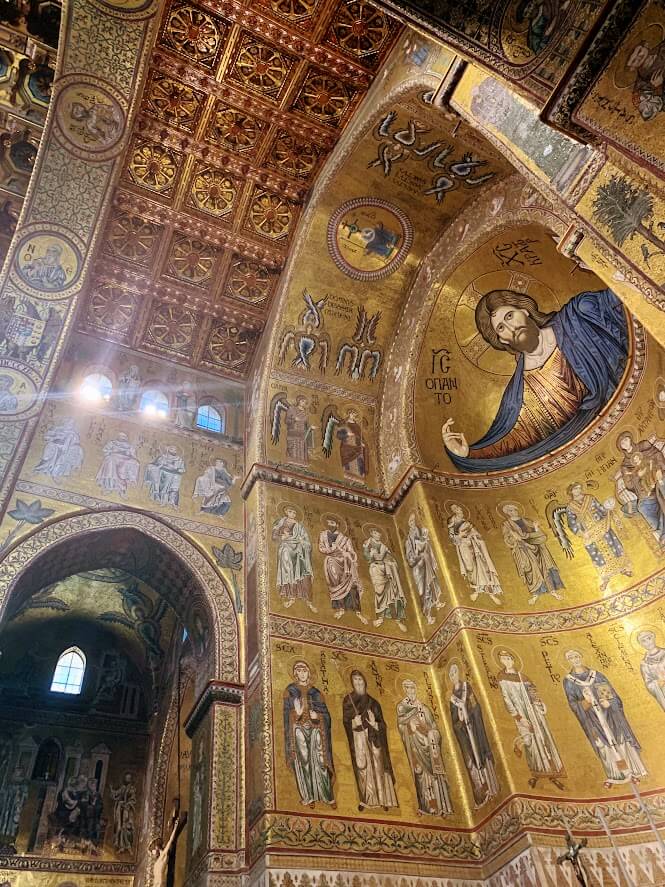 Different cultures - Norman, Arab, and Byzantine - blend effortlessly in places like Monreale Cathedral. It was built in 1172-1174 under Norman rule.
Different cultures - Norman, Arab, and Byzantine - blend effortlessly in places like Monreale Cathedral. It was built in 1172-1174 under Norman rule.(This page last edited: July 15, 2025)
Recent Articles
-
Honeymoon in Sicily: Where Landscapes Stir the Heart
Dec 17, 25 12:21 PM
Honeymoon in Sicily: Timeless temples, coastal hideaways, slow meals, and landscapes that invite closeness. -
Best Time to Visit Sicily: Your Seasonal Guide
Dec 05, 25 04:23 AM
Find the best time to visit Sicily. Explore seasonal weather, crowds, prices, and highlights. -
Where to Stay in Sicily: Top Areas for Every Traveler
Nov 27, 25 08:14 AM
Where to stay in Sicily: A guide to the island’s best regions, helping you choose the perfect base for your trip.
Follow MANY FACES OF SICILY on Facebook, Instagram, Bluesky & Tumblr
Contact: vesa@manyfacesofsicily.com







